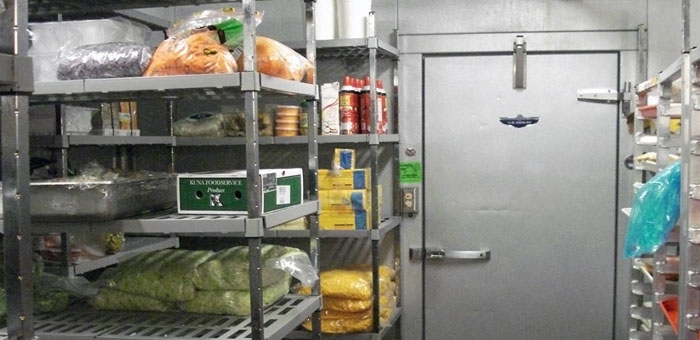Food trucks have two major cost centers. One is food and beverage. The other is labor. Which do you think is most problematic for mobile food vendors? If you said labor, either you’ve been running a food truck for at least a few months, or you have some genuine insight into the challenges of running a mobile food business. Labor issues are typically the number one concern of most food truck owners. Keep food and beverage costs in check through price adjustments and portion controls. On the other hand, labor costs are not controlled by paying low wages. Controlling food truck labor costs is best done through sound scheduling and improving your employee productivity.
Controlling Food Truck Labor Costs Through Productivity
Increase productivity through training, better food truck kitchen layouts, and the use of labor-saving equipment and products. This article addresses cost-related issues and ways to increase employee productivity. Work in the the areas you have the most control.
RELATED: Why Food Truck Owners Need To Track Labor Daily
Keep an Eye Numbers
Before you can develop appropriate and effective measures for labor cost control, you must gather the necessary information on which to make your decisions. Therefore, the accumulation and reporting of relevant labor cost information is critical. To do this, you need more than your calculator.
Productivity and labor cost efficiency cannot be addressed and assessed only in straight numbers. If customer service is compromised, the initial savings of a lower payroll cost can be negated by a decrease in sales caused by customer losses.
When trying to determine the productivity of your staff, the traditional ratio of “payroll to total sales” is not an effective and accurate measure of worker productivity and scheduling efficiency.
Essentially, you pull this ratio from your income statement to tell you how much sales you are squeezing out of your payroll expense. What could be more telling? Well, there are three reasons why additional measures must be used to analyze labor costs.
The traditional labor cost ratio really just indicates to management what needs to be addressed, without providing any specific information. The figures reported on the monthly income statement are historical and after-the-fact. Labor cost should be controlled beforehand. So, compile labor cost figures at least weekly.
So what is the best measure of productivity? There is no one magic ratio. Monitor several benchmarks to take the pulse of your mobile food business.
RELATED: KPI Examples Food Trucks Can Use To Improve Profits
Don’t Lower Wages
Food trucks should not control labor cost by keeping salaries and wages low. In fact, operations paying less than the going wage rate in their locale will find it difficult to hire and retain the more productive employees.
Think about it. If you felt you were a very good cook or manager, would you quit your current job and go work for someone who paid you less than you were making? I don’t think many of us would work for less.
About one-third of all employees who leave a job voluntarily, leave for better pay. You may have heard that money cannot be a motivator for increasing productivity.
Well, it is probably true that just increasing the wages of an employee will not necessarily mean they will be more productive, but when money is used as a reward for outstanding performance, it can be an effective motivator.
There are a number of scheduling methodologies you can use that will reduce your labor costs just by adjusting when you have employees arrive and depart from work. Efficient scheduling must reflect the variations in business volume that occur during the day and even meal period.
Set a goal to accomplish the necessary workload with a minimum number of labor hours while maintaining your level of service.
Reward productive employees with pay increases. Treat your valuable employees like you do your most valuable customers. Realize that the labor cost per cover and the number of covers per labor hour can be improved only with productive employees.
If productive employees are treated no differently from marginally productive ones, there is no benefit to the employee to do more than average for he or she will get the same enumeration either way.
Set Benchmarks
Don’t use a single measure to evaluate labor productivity; management must employ multiple measures collectively. Management must have a better index of labor productivity and no single measure can efficiently accomplish that. Therefore, additional measures are needed to properly analyze labor costs. The additional information needed is readily available as it is compiled on a daily or weekly basis. These measures are:
- Covers per labor hour
- Labor cost per cover
- Labor cost per labor hour
Where do you start? Each time payroll is processed, total labor hours by job category are tallied. Management will compare actual hours worked to those originally scheduled and look for variances. If hours worked are greater than scheduled hours, they will investigate to determine the job category where the variance occurred.
Scheduling Based On The Numbers
Employee schedules are determined not by revenue but by customer counts. The “covers per labor hour” is perhaps the best indicator of labor productivity compiled by a mobile food service operation because it is not distorted by the way sales are affected by price increases and discounts.
Although some drops in customer counts occur in the long run when prices are increased, covers per labor hour remains the most effective indicator of employee productivity.
The “labor cost per labor hour” is another productivity index. Calculate it by dividing total payroll by total labor hours. When calculated by respective employee job categories, one can readily see the wage differentials between jobs. This information can assist management in establishing wage ranges for each job category.
The third index of productivity is the “labor cost per cover.” This tells us how much labor is used to serve each customer that walks up to your food truck service window. The total payroll is divided by the number of customers.
Check out this example:
Assume:
- Total Payroll Cost = $1,400
- Total Labor Hours = 144
- Overall Covers Served = 1,200
Therefore:
- Covers per Labor Hour (1,200/144) = 8.33
- Labor Cost per Labor Hour ($1,400/144) = $9.72
- Labor Cost per Cover ($1,400/1,200) = $1.17
The Bottom Line
Controlling labor costs can help make or break your food truck business. Use these tips to help increase your profit and your staff member productivity.
Did we miss something in regards to controlling food truck labor costs? Share your thoughts on this topic in the comment section, our food truck forum or social media. Twitter | Facebook
DISCLAIMER: Mobile Cuisine and its affiliates do not provide tax, legal or accounting advice. This material has been prepared for informational purposes only. It is not intended to provide, and should not be relied on for, tax, legal or accounting advice. You should consult your own tax, legal and accounting advisers before engaging in any transaction.




